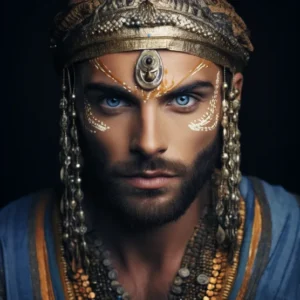Introduction:
In the evolving landscape of beauty and self-expression, men’s makeup has emerged as a powerful means of asserting individual identity. However, breaking down societal norms and fostering acceptance requires education and awareness. This article explores the importance of educational initiatives in promoting men’s makeup as a legitimate and empowering form of self-expression, challenging stereotypes, and contributing to a more inclusive definition of beauty.
Understanding the Stigma:
Historical Context:
- Men’s makeup has a long history, but societal norms have often enforced rigid gender roles, creating stigmas around the idea of men using cosmetics. Understanding this historical context is crucial in dismantling preconceived notions.
Toxic Masculinity:
- Toxic masculinity perpetuates the idea that certain behaviors, including the use of makeup, are incompatible with traditional notions of masculinity. Educational initiatives can address and challenge these harmful stereotypes.
The Power of Education:
Awareness Campaigns:
- Launching awareness campaigns that highlight the historical use of makeup by men and showcase diverse modern expressions can challenge stereotypes and broaden perspectives.
Workshops and Classes:
- Hosting workshops and classes can provide a hands-on experience, teaching individuals about the application of makeup and its potential for self-expression. These sessions can be inclusive and open to people of all genders.
Inclusivity in Beauty Education:
Diverse Representation:
- Educational materials should feature diverse representations of men using makeup, showcasing various styles, skin tones, and identities. This fosters a sense of inclusivity and helps individuals see themselves reflected in the narrative.
Collaboration with Influencers:
- Collaborating with male beauty influencers and makeup artists for educational content brings real-world experiences to the forefront. Their stories can inspire and resonate with a broad audience.
Addressing Concerns:
Hygiene and Safety:
- Education should address concerns about hygiene and safety associated with makeup use. Providing information on proper product selection, application techniques, and skincare routines ensures safe practices.
Workplace Acceptance:
- Some men may hesitate to embrace makeup due to concerns about workplace acceptance. Educational initiatives can provide guidance on navigating professional environments and challenging stereotypes in the workplace.
Celebrating Diversity:
Artistic Expression:
- Emphasizing makeup as a form of artistic expression rather than a gender-specific practice encourages individuals to explore their creativity without fear of judgment.
Intersectionality:
- Recognizing the intersectionality of identity, including race, sexual orientation, and gender identity, ensures that educational initiatives are inclusive and address the unique challenges faced by different communities.
Future Prospects:
Normalizing Inclusive Beauty:
- The ultimate goal of educational initiatives is to normalize inclusive beauty practices, where men’s makeup is seen as a natural and accepted aspect of self-expression.
Shaping Perspectives:
- By shaping perspectives through education, we contribute to a future where beauty is defined by individuality rather than conforming to societal norms, fostering a more accepting and diverse world.
Conclusion:
Educational initiatives play a pivotal role in reshaping perceptions around men’s makeup, transforming it from a stigmatized practice to a celebrated form of self-expression. As we educate individuals about the rich history, diverse representations, and the artistic potential of men’s makeup, we contribute to a more inclusive beauty landscape where everyone feels empowered to authentically express themselves, regardless of gender. Through knowledge and understanding, we pave the way for a future where makeup is a universal language of creativity, individuality, and acceptance.


